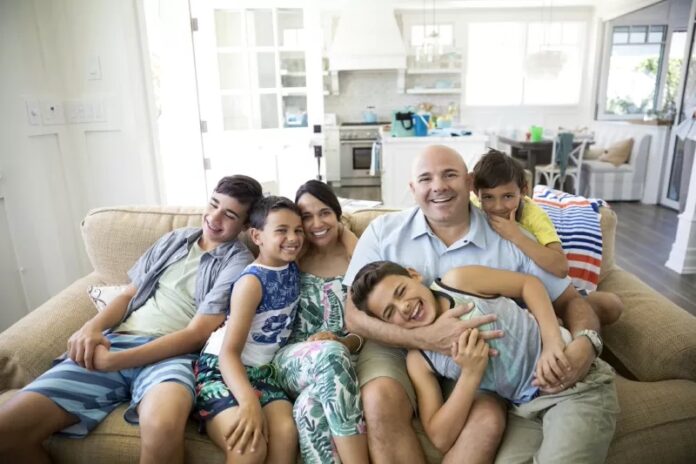In its most basic sense, a blended family is one where the parents have children from previous relationships but all the members come together as one unit. However, as blended families become increasingly common, the definition of a blended family is changing. Understanding the basics of a blended family can be essential for ensuring your family can embrace its strengths and work through its differences.
What Is a Blended Family?
The simple definition of a blended family, also called a step family, reconstituted family, or a complex family, is a family unit where one or both parents have children from a previous relationship, but they have combined to form a new family. The parents may be in a same sex or heterosexual relationship and may not have children with each other.
Married Partners
The parents of a blended family may be married, often after a divorce or death of a previous spouse. One or both partners may have biological or adopted children that come together as step siblings to form one family unit.
Cohabitating Partners
Some modern blended families may not have married parents; cohabitating parents can both serve as role models for the children without a marriage ceremony. Cohabitating partners may have biological children from previous relationships, have adopted children and/or have children with their current partner as well.
Adoption
In many cases, the non-biological parent will adopt the other’s children, but not always. To formalize an adoption, both biological parents, except in the case of a death, will need to approve the adoption. Formalizing an adoption gives the new stepparent legal authority with the children, including the ability to authorize emergency medical care and the responsibility to help provide care if the parents’ relationship ends.
Difficulties of the Modern Blended Family
While the concept of the step family has been around for centuries, many blended families were not recognized until the two parents married and agreed to care for the children together, even if one parent was not biologically related. Today, it is much more acceptable for the adults in the relationship to live together and raise the children jointly without the formality of marriage or adoption. Blended families may experience difficulty in terms of child support, medical decisions, and other complex issues, such as:
- Conflicting roles of family members when children are of different ages, such as when an older child of one parent becomes the eldest and younger children of the other family must readjust to a new position
- Conflicting family values and responsibilities of each family member with regards to daily chores, appropriate behavior, and other expectations
- Social etiquette difficulties between the non-involved biological parent and the new stepparent, and which one is acting as which type of role model
- Stress on the biological parents when balancing the needs of their children and the new partner(s), particularly where values may conflict
- Communication issues regarding how to jointly raise the children
Many blended families successfully overcome these difficulties, becoming strong, supportive family units for every member. Fortunately, there are many resources available to offer understanding and support to blended families, from counseling services, books, and programs to online material.
Blended Family Benefits
While it may seem that step families face many problems blending two family units into one and sometimes it may seem easier to call it quits, there really are great benefits to a blended family as well:
- Children have the benefit of two, or more, caring parents to act as role models.
- All family members learn to appreciate greater diversity and differences.
- Often, more financial and emotional support is available for all family members.
- New siblings may connect well with each other and form caring and supportive relationships with their new brothers or sisters.
- New family structure may be healthier than their previous one offering a more peaceful and stable household.
Understanding Blended Families
By understanding the subtleties between the definition of a blended family and the definition of family in general, the finer points of blended families come to the forefront. While parents with children from different parents face additional challenges, blended families also enjoy advantages of a unique family structure and blended family statistics show both points. Taking a closer look at your blended family allows you to appreciate the uniqueness and value of every member of your family, no matter what biological or legal relationships may or may not be present.


